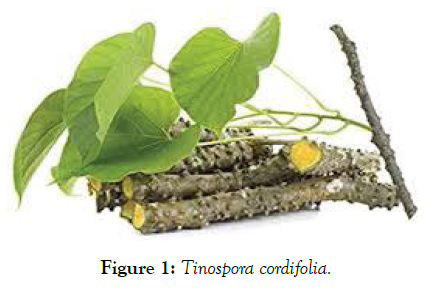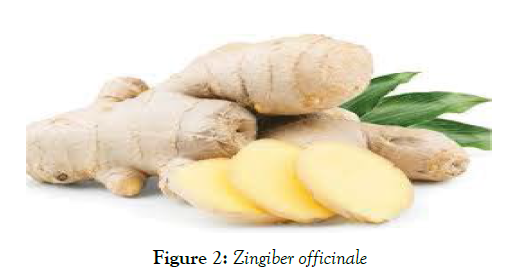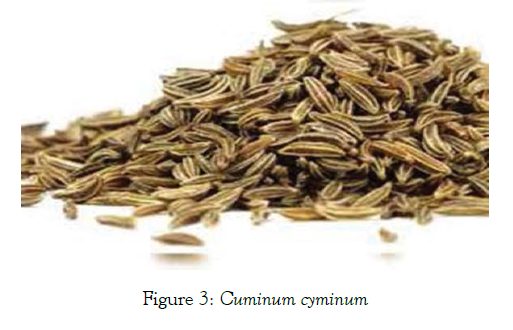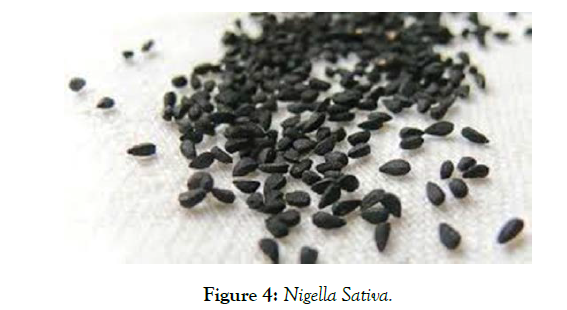Review Article - (2021) Volume 12, Issue 8
Diabetes mellitus is a group of metabolic disorders sharing the common underlying feature of hyperglycemia. Along with hyperglycemia this disease is also associated with several secondary health complications which are the major causes of morbidity and death in diabetic subjects. The currently available antidiabetic agents like insulin, metformin, sulfonylureas and alpha glucosidase inhibitors and are widely used to control the hyperglycemia. But prolonged use of these agents was also shown several adverse effects on diabetic subjects. Thus, it is essential to look for more effective antidiabetic agents with fewer side effects. Traditional Indian medicinal plants having antidiabetic properties can be a useful source for the development of safer and effective oral hypoglycemic agents. According to ethnobotanical source of information till now 800 traditional plants were reported against hyperglycemia. But only few of them were clinically tested and scientifically approved. However, plant remedies are the mainstream of treatment in underdeveloped regions because of its low cost and less to no adverse effect. This review focuses on diabetes mellitus and the role of plants in the management of diabetes mellitus.
Diabetes mellitus; Hyperglycemia; Medicinal plant; Phytoconstituents; Diabetes management
Diabetes is a chronic disorder and a life threatening disease. It is a group of metabolic disorder of the lipid, carbohydrate and protein, which is caused by insulin insufficiency or insulin action or both which increase free radical group [1,2]. Polyuria, polydipsia and polyphagia is a typical symptom of diabetes. It causes blindness, heart attack, nephropathy and neuropathy. Diabetes persons have higher risk of heart attacks [3]. Severe hyperglycemia may lead to hyperosmolar disease and insulin insufficiency to severe ketoacidosis. Chronic hyperglycemia leads to long-term damage, dysfunction, and failures of numerous cells, tissues, and organs [4]. There are three types of diabetes mellitus, Type 1 diabetes mellitus also called as (IDDM), Type 2 diabetes mellitus called as (NIDM), and Gestational diabetes [5]. Out of all the three types of diabetes mellitus Type 1 DM ranges about 10% of all the diabetic patients estimated nearly 20 million person globally [6,7]. Type-2 DM is the most common type of DM ranges about 90% of the total diabetic cases globally [8-10]. It has been estimated that there will be 425 million person affected by this disease worldwide by 2030 [11, 12]. Moreover, this number actually may be to rise to 642 million by 2040 [13]. The conventional management of diabetes mellitus involves use of various recommended drugs such as metformin, sulfonylurea and thiazolidinedione. However, these synthetic drugs definitely work against hyperglycemia but prolonged use of these drugs may leads to various complications. Along with the side effects, some limitations have been associated with this disease like availability and the cost of the drugs. Hence, there is a demand for alternative drugs having equally efficient to manage hyperglycemia with low to no side effect in minimum cost [14, 15].
Medicinal plants
Herbal medicine that has been traditionally used against diabetes mellitus is the safest way to manage this disease. Plants with medicinal properties serves as the biggest source of traditional medicines that have been continuously practiced since long time ago in the form of herbal drugs and are easily available as a source of treatment all over the world [16]. There are several medicinal plants reported by the date, which helps to reduce high blood glucose level [17]. Some medicinal plants also studied for their active hypoglycemic properties these are Avicennia marina, Allium cepa, Ficus benghalensis, Rhizophora mucronata, Allium sativum, Pterocarpus marsupium, and Gymnema sylvestre [18]. Active compounds of these plants significantly lower down the high blood glucose level and it helps to restore the pancreatic cells leading to enhance insulin level in the blood [19]. This plant helps to recover the function of the pancreas by increasing the insulin secretion or decreasing the rate of absorption of glucose in the intestine [20]. Medicinal plants also help to retain the optimum enzymatic reactions in the body, therefore expediting effective breakdown and production of glucose [21].
Tinospora cordifolia (Guduchi)
Tinospora cordifolia comes under the family Menispermaceae. It is a large, glabrous and climbing tree distributed all over the India. In India T. cordifolia used as an Ayurvedic medicine for the management of diabetes mellitus since long back [23-25]. Common name of T. cordifolia is Guduchi. Various researches show that this plant acts effectively against diabetes mellitus.
A research work of six week oral administration of T. cordifolia extract on diabetic animal model gives a significant reduction in urine, lipid and blood glucose level. Effective restoration in the tissue of alloxan induced diabetic mice was also observed at the same time. Weight loss is the common onset of diabetes mellitus, however it has been observed that after the administration of extract of T. cordifolia there is a gradual increase in the body weight of diabetic mic [22]. Similarly aqueous extraction of root of T. cordifolia administered on alloxan diabetic rats causes significant reduction in blood glucose and lipid level [26]. It has been also reported that daily dosing of both aqueous and alcoholic extract of T. cordifolia may increase glucose tolerance and reduction in blood glucose level [27]. It is evident from the study that T. cordifolia acts more effectively against nephrotoxicity and maintains various biochemical parameters of diabetic mice in comparison to Metformin (Figure 1). It will be certainly used as effective antidiabetic agent in future [28].

Figure 1: Tinospora cordifolia.
Zingiber officinale (Ginger)
Zingiber officinale (Ginger) is commonly known as “Adrakh” belongs to Zingiberaceae family is a commonly used spice in our country [29]. Chemical analysis of ginger shows that it contains more than 400 diverse active compounds of medicinal importance. The major elements in ginger rhizomes are carbohydrates (50–70%), lipids (3–8%), terpenes, and phenolic compounds [30]. It has been evident from the number of clinical trials that blood glucose level can be controlled in type 2 diabetes mellitus and up to some extant lipid level also. Ginger is now widely known and acceptable for its effectiveness in diabetes prevention and control. Recent pharmacological studies support its potential for treating both the hyperlipidemic and hyperglycemic aspects of diabetes [31].
Experimental research in animals both in vitro and in vivo has shown that ginger can have effects on carbohydrate metabolism and insulin sensitivity [32]. The key enzymes controlling carbohydrate metabolism associated with hyperglycemia and type 2 diabetes are α-amylase and α-glucosidase. Ginger extract has in vitro been able to inhibit the enzymes α-amylase and α-glucosidase to regulate blood glucose level [33].
Another study reported that aqueous extract of ginger significantly reduces blood glucose level in streptozotocin-induced diabetic mice [34]. Dietary ginger significantly improved HbA1c from baseline to follow-up showing that this natural medicine might have an impact on glucose control over a longer period of time in patients with T2DM [35] (Figure 2).

Figure 2: Zingiber officinale
Cuminum cyminum (Cumin)
Cuminum cyminum L. belongs to the family Apiaceae is consumed in large quantities by Indians. Cumin is widely used in Ayurvedic medicine for the treatment of dyspepsia, diarrhoea and jaundice. It also has stomachic, diuretic, carminative, emmanogogic, antispasmodic, antimicrobial, fungicide, and tyrosine inhibitor properties [36,37]. It is reported that cumin seeds have antidiabetic effect on streptozotocin induced diabetic rats [38] and hypolipidemic activity in alloxan-induced diabetic rats [39]. Cuminaldehyde derived from cumin seed preserve aldose reductase and α-glucosidase inhibitory activities [40] and antioxidant qualities [41] It is reported that cumin seeds have an antidiabetic result on streptozotocin-induced diabetic rats [42] and hypolipidemic action in alloxan-induced diabetic rats [43] (Figure 3).

Figure 3: Cuminum cyminum
Nigella sativa (Black cumin)
Nigella sativa commonly called as Black cumin, belongs to Ranunculaceae family. Nigella sativa is highly effective cytoprotective agent. It works on hepatocyte of diabetic mice as well as maintains biochemical parameters to normal level. It is evident from study that Nigella sativa acts well against diabetes [59]. It improves insulin sensitivity in peripheral tissues and enhances its secretion in the β-cells of pancreatic [60,61]. Extract of N. sativa also relates choleretic and uricosuria activities [49]. In addition, the crude oil prepared from the seeds produces a variety of pharmacological actions including diuretic, anti-hypertensive and anti-diabetic effects [58]. Apart from the anti-diabetic effects, N. sativa shown various other medicinal properties. Seed extraction of N. sativa has been used to suppress coughs [44]. N. sativa also have anticarcinogenic properties and delay the carcinogenic process [46,47]. It is frequently used in the treatment of stomach pain, diarrhea, and polio [48]. It also exhibit anti-inflammatory [50] and antioxidant effects [51]. In additional, essential oil was shown to have antihelminthic [52], antinematodal [53], antischistosomal [54], antimicrobial [55,56], and antiviral [57] effects (Figure 4).

Figure 4: Nigella Sativa.
Among all endocrine disorder Diabetes mellitus is the most common disorder existing now days. This disease also named as life style disease (LSD) affecting millions of people worldwide including India. Rapid increase in the number of diabetic patients is a major public health concern. Burden of high cost for medical treatments, unsatisfactory treatment response, and mistrust of people in current day health care facilities shows the still incomplete nature of the current medicinal system. This article aims to inform that Indian medicinal plants having capacity to maintain the blood glucose level and acts effectively against damaged beta cell of pancreas, which ultimately regulate insulin secretion inside the body. Indian medicinal herbs have immense potential to control and manage not only diabetes mellitus but also other disease which are directly or indirectly associated with this life style disorder.
Author’s contributions
Dr. Sneha Navin: Reported few medicinal plants against diabetes mellitus also reviewed and cited many articles. Designing of the review article.
Dr. Abhinav Srivastava: Writing the manuscript and compilation.
Roushan Kumari: Research article collection and compilation.
Dr. Divya Prakash: Provided source of information.
Dr. Ranjit Kumar: Final editing of the review article.
Citation: Sneha N, Abhinav S, Divya P, Roushan K, Ranjit K (2021) Management of Type-2 Diabetes Mellitus through Indian Medicinal Plants. J Diabetes Metab. 12:892.
Received: 29-Jul-2021 Published: 27-Aug-2021, DOI: 10.35248/2155-6156.21.12.892
Copyright: © 2021 Sneha N, et al. This is an open access article distributed under the terms of the Creative Commons Attribution License, which permits unrestricted use, distribution, and reproduction in any medium, provided the original work is properly cited.